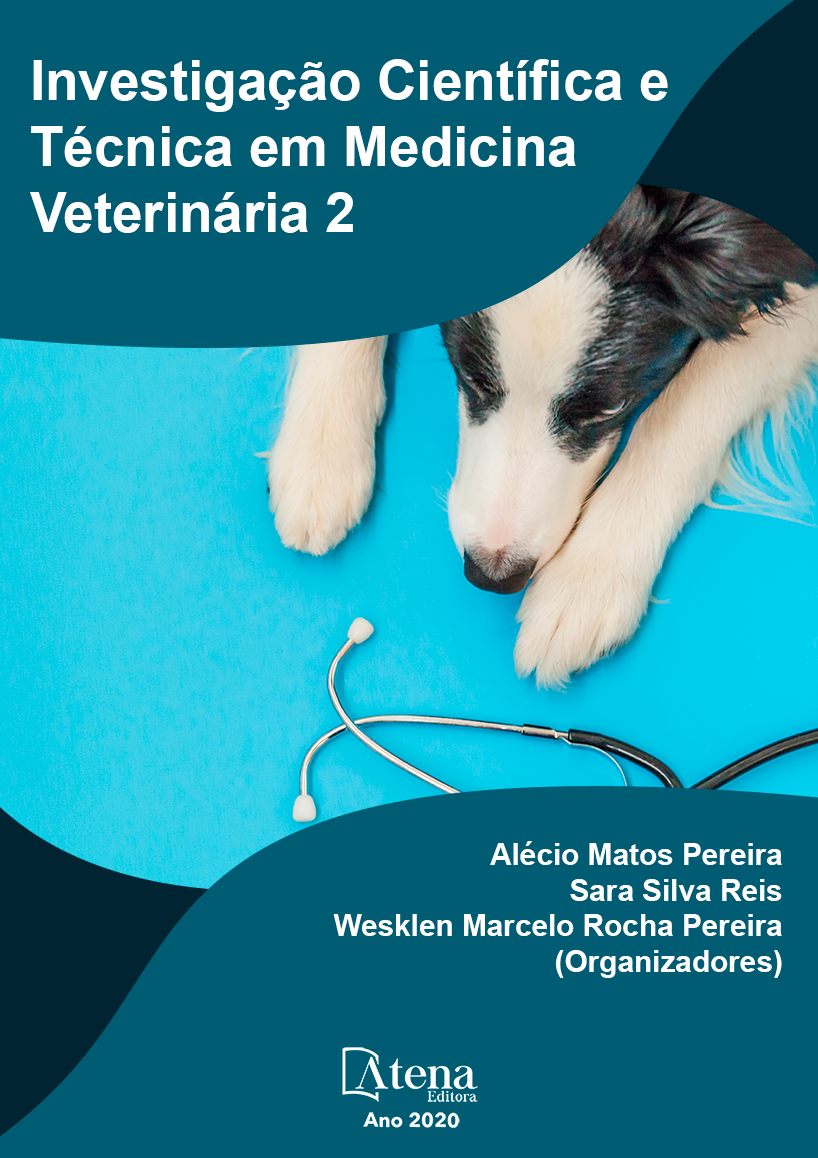
Pectus excavatum EM FELINO DOMÉSTICO: RELATO DE CASO
O Pectus excavatum caracteriza-se por ser uma deformidade do esterno e das cartilagens costais, que resulta em um estreitamento ventro-dorsal torácica. É comum que pacientes acometidos pela enfermidade apresentem funções respiratórias e cardiovasculares alteradas devido ao posicionamento anormal do coração. O objetivo deste trabalho foi relatar um caso de Pectus excavatum em felino doméstico. O animal foi atendido na rotina clínica do Hospital Veterinário Dix-Huit Rosado Maia (HOVET) da UFERSA, Campus Mossoró – RN. No exame físico, observou-se que havia uma depressão ventro-dorsal das esternebras, na região distal do esterno. Não foram observadas outras alterações no exame físico. Foi solicitada a realização de radiografia torácica para a caracterização da anomalia do esterno. O resultado deste exame indicou um desvio dorsal importante na extremidade caudal do esterno em direção ao interior do tórax, com acentuada curvatura, sugerindo Pectus excavatum. Além disso, observou-se silhueta cardíaca com dimensões aumentadas, apresentando-se em contato com a parede torácica, e presença de desvio importante ao hemitórax esquerdo. A partir disso, foi solicitada a realização de ecocardiograma, porém sua prática foi limitada, pois o pequeno tamanho do paciente dificultou a visualização adequada das estruturas. Foi recomendado que houvesse acompanhamento do paciente, porém a tutora não retornou. Apesar de pouco comum, é importante realizar o adequado diagnóstico de Pectus excavatum, com atenção às possíveis complicações que possam se apresentar a partir desta anormalidade.
Pectus excavatum EM FELINO DOMÉSTICO: RELATO DE CASO
-
DOI: 10.22533/at.ed.14220280716
-
Palavras-chave: Diagnóstico por imagem; alterações congênitas; desvio cardíaco
-
Keywords: Diagnostic imaging; congenital changes; cardiac bypass.
-
Abstract:
Pectus excavatum is characterized by being a deformity of the sternum and costal cartilages, which results in a thoracic-dorsal narrowing. It is common for patients affected by the disease to have altered respiratory and cardiovascular functions due to the abnormal positioning of the heart. The aim of this study was to report a case of Pectus excavatum in a domestic cat. The animal was seen in the clinical routine of the Veterinary Hospital Dix-Huit Rosado Maia (HOVET) at UFERSA, Campus Mossoró - RN. On physical examination, it was observed that there was a ventro-dorsal depression of the sternebras, in the distal region of the sternum. No other changes were observed in the physical examination. Thoracic radiography was requested to characterize the sternum anomaly. The result of this examination indicated a significant dorsal deviation at the caudal end of the sternum towards the interior of the chest, with marked curvature, suggesting Pectus excavatum. In addition, a cardiac silhouette with enlarged dimensions was observed, presenting in contact with the chest wall, and the presence of significant deviation to the left hemithorax. Based on this, an echocardiogram was requested, but its practice was limited, as the small size of the patient made it difficult to adequately visualize the structures. It was recommended that the patient be monitored, but the tutor did not return. Although uncommon, it is important to make an adequate diagnosis of Pectus excavatum, paying attention to the possible complications that may arise from this abnormality.
-
Número de páginas: 6
- Sandy Beatriz Silva de Araújo
- Iris da Silva Marques
- Maria Carolina Cabral de Vasconcellos Vinhas
- Susana Pereira de Oliveira
- Stphanie Larissa Ramos de Santana Leal
- Luanda Pâmela César de Oliveira
- Moises Dantas Tertulino


